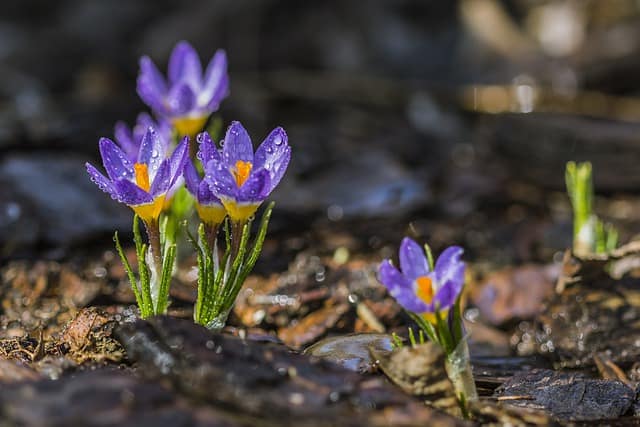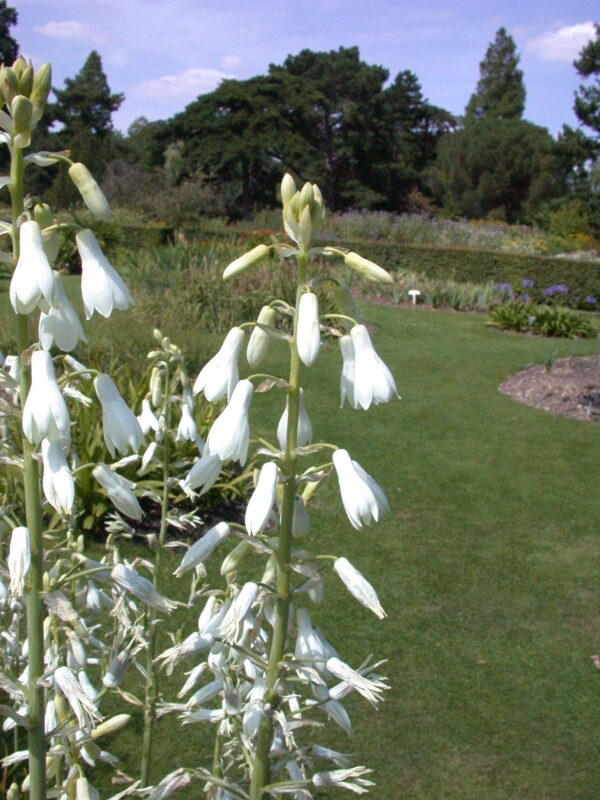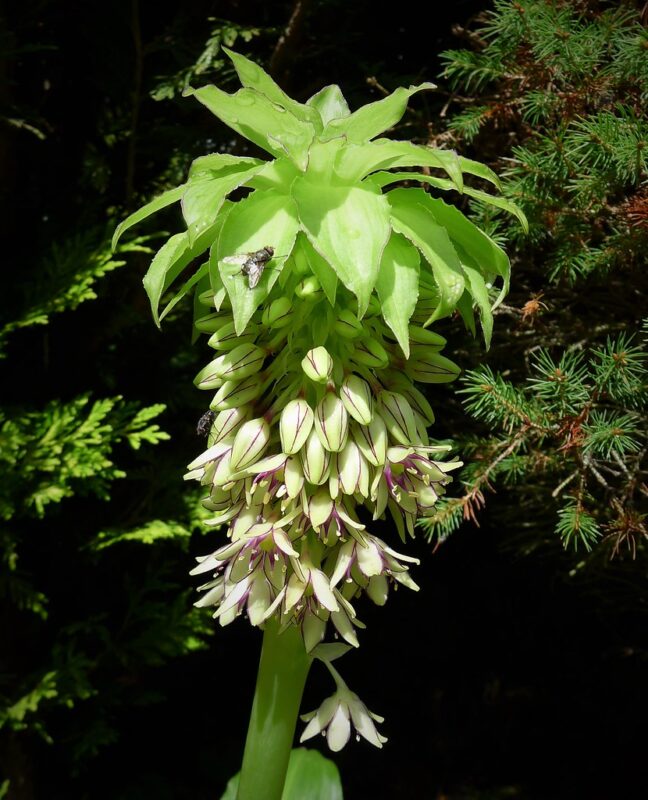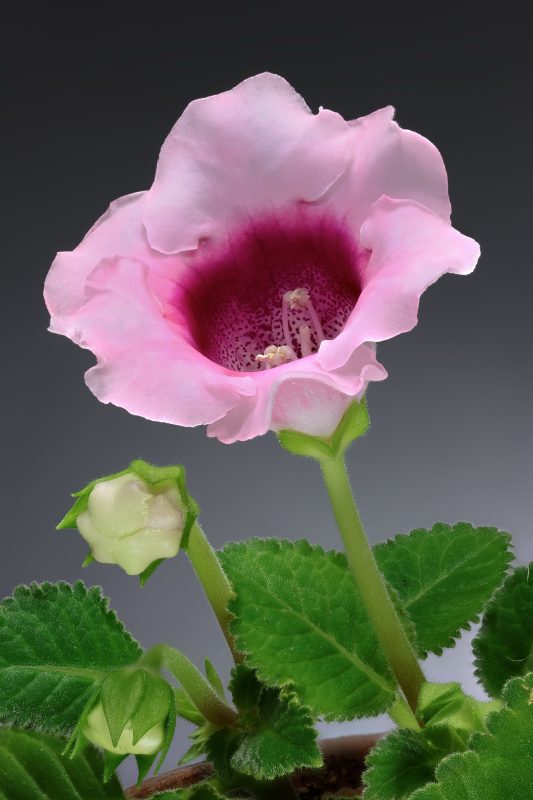February marks a pivotal time in the gardening calendar, particularly for people in warmer regions eager to kickstart the growing season. As the landscape begins to shake off winter’s chill, it’s an opportune moment to plant various bulbs that will flourish as spring unfurls. This article digs into a selection of beautiful bulbs you can plant in February, providing comprehensive insights into their unique characteristics, planting requirements, and ideal conditions for thriving.
Daffodil

Daffodils, or Narcissus, are emblematic of spring with their bright yellow and white blooms. These hardy bulbs are renowned for their resilience and can be planted as early as February. Daffodils thrive in well-drained soil and prefer sunny or partially shaded areas. They are versatile and can be planted in groups for a stunning display, or mixed with other spring flowers for a more eclectic look.
Planting Tips: For optimal growth, plant daffodils about 6 inches deep and 4 to 6 inches apart. Ensure that the pointed tip of the bulb is facing upwards. Water them generously after planting, but avoid overwatering, as daffodils dislike soggy soil. Once planted, they require minimal maintenance, making them ideal for both novice and seasoned gardeners.
Benefits: Daffodils are not just beautiful; they are also deer and rodent resistant, making them a reliable choice for landscapes where these pests are a concern. With proper care, they naturalize over time, returning year after year, thus providing a perennial spring display.
Tulip

Tulips are perhaps the most iconic of spring flowers, known for their vibrant colors and elegant shapes. With countless varieties available, they can add a splash of color to any garden. PLanting tulip bulbs in February ensures that you’ll witness their stunning flowers bloom from late March through May.
Planting Tips: Tulips prefer full sun and well-drained soil. When planting, place them about 6 to 8 inches deep and 4 to 6 inches apart. The pointed end should always face up to facilitate optimal growth. After planting, cover the area with mulch to retain moisture and regulate soil temperature.
Benefits: Tulips are relatively easy to grow and come in a wide array of colors and shapes, from simple single blooms to complex fringed varieties. They are excellent for borders, containers, or as cut flowers for indoor arrangements. However, be mindful of their need for a cold period; temperatures below 50°F are necessary for bulbs to establish roots before spring’s arrival.
Hyacinth

Hyacinths are celebrated for their rich fragrance and dense flower clusters that create a striking visual impact. These bulbs thrive in well-drained soil and enjoy full sun, making February planting a great opportunity for fragrance-filled gardens come spring.
Planting Tips: Plant hyacinth bulbs about 6 to 8 inches apart and 4 to 6 inches deep. It’s essential to select a location that receives plenty of sunlight as this encourages healthy growth and vibrant color. If you are keen on enjoying their fragrance indoors, consider planting them in pots and placing them in a sunny window after they’ve established roots outdoors.
Benefits: In addition to their alluring scent, hyacinths are excellent for attracting pollinators like bees and butterflies to your garden. The diversity of colors, ranging from deep purples to bright pinks and whites, ensures that they can fit into any aesthetic.
Snowdrop

Snowdrops are tiny, charming blooms that symbolize the arrival of spring. They can push through the frost and are often among the first flowers to emerge, making them a delight to see in February. These resilient bulbs can flourish in a variety of settings, from wildflower gardens to more formal landscapes.
Planting Tips: Snowdrop bulbs should be planted about 3 to 4 inches deep and 3 to 4 inches apart. They thrive in partial shade and prefer well-drained soil that retains some moisture. While they are low-maintenance, ensuring they have adequate water during dry spells can enhance their vigor.
Benefits: Snowdrops not only provide early color but are also a vital resource for hungry pollinators as they emerge before most other flowers. Their naturalization habit allows them to multiply and create lovely colonies over time, filling shaded areas with delicate blooms.
Crocus

Crocuses are a herald of spring, known for their cheerful colors and ability to bloom even while snow is still on the ground. These hardy bulbs thrive in February planting and are suitable for a variety of garden settings, including rock gardens and borders.
Planting Tips: Plant crocus bulbs about 3 to 4 inches deep and 2 to 3 inches apart. These bulbs prefer well-drained soil and full sun, although they can tolerate some shade. A good tip is to plant crocus bulbs in groups for a more dramatic visual effect.
Benefits: With their versatility and low maintenance requirements, crocuses are perfect for gardeners of all levels. They are also excellent for naturalizing, often reverting to the wild and coming back year after year, adding to the garden’s allure each spring.
Liatris

Liatris, also known as blazing star, adds a unique vertical element to any garden with its tall spiky flowers that bloom from the top down. These stunning flowers can be planted in February, thriving under full sunlight with well-drained soil.
Planting Tips: Liatris bulbs should be planted around 4 to 6 inches deep and spaced 12 inches apart to allow for their tall growth. They appreciate a sunny location and are drought-resistant once established, making them easy to care for.
Benefits: Liatris flowers are a favorite among pollinators, including bees and butterflies, contributing to ecological balance in your garden. Their striking appearance also makes them an excellent choice for cut flowers, adding drama to any floral arrangement.
Galtonia

Galtonia, commonly known as summer hyacinth, boasts elegant, tall spikes adorned with bell-shaped flowers. These bulbs are not as commonly known but bring uniqueness to your February planting efforts, flourishing in sunny gardens with good drainage.
Planting Tips: Plant Galtonia bulbs 4 to 6 inches deep and 4 to 6 inches apart. These bulbs thrive in full sun and appreciate moisture, so consistent watering is important during dry periods. Incorporating organic matter into the soil can enhance drainage and promote healthy growth.
Benefits: Galtonia’s graceful blooms can provide a romantic and whimsical look to gardens, ideal for cottage styles. They also attract pollinators while offering a striking display alongside other spring-blooming flowers.
Lilies

Lilies are celebrated for their impressive size and beauty. They provide a bold floral display that can transform any garden. While February is often referred to in the context of spring-blooming bulbs, it’s also an excellent time to plant certain varieties of lilies, particularly hybrid types that do well when planted early.
Planting Tips: When planting lilies, ensure they are placed about 6 to 8 inches deep and 12 to 18 inches apart. They thrive best in full sun, requiring well-drained soil enriched with organic matter for maximum blooming potential.
Benefits: Lilies are versatile and can be planted in borders, pots, or even as cut flowers for arrangements. Available in a multitude of colors and fragrances, they can easily be integrated into any garden design while attracting pollinators.
Agapanthus

Agapanthus, known as African lily, is recognized for its stunning globelike flower clusters on tall stalks. While traditionally associated with warm climates, they can adopt a bulb-like structure in cooler regions, making February a great time to plant them.
Planting Tips: When planting Agapanthus bulbs, ensure they are spaced about 18 inches apart and planted 4 to 6 inches deep. They prefer full sun and well-drained soil, with regular watering to help establish their roots.
Benefits: Agapanthus provides vibrant blue or white blooms and makes for excellent cut flowers. They flourish in containers, allowing gardeners to bring delightful color to patios and porches, while also being drought-tolerant once established.
Eucomis

Eucomis, often referred to as pineapple lilies due to their unique appearance, are a fascinating addition to any garden. With their exotic look, they are perfect for planting in February for a show-stopping display later in the spring.
Planting Tips: Plant Eucomis bulbs about 4 to 6 inches deep, spaced at least 12 inches apart. They enjoy a sunny location with well-drained soil. During dry spells, ensuring consistent moisture will benefit these plants greatly.
Benefits: Aside from their striking flowers, Eucomis has a sturdy structure that adds height and texture to garden beds. They are relatively low-maintenance and pair well with other perennials and annuals, creating a lush, layered effect in landscapes.
Canna

Cannas are flamboyant tropical-looking plants that offer vibrant foliage and striking flowers. Although they are technically not traditional bulbs, they produce rhizomes that can be planted in February for a glorious summer display.
Planting Tips: Canna rhizomes should be planted about 4 inches deep, spaced around 18 inches apart. They thrive in full sun and appreciate rich, moist soil. Consider fertilizing during the growing season to enhance their impressive blooms.
Benefits: The lush, broad leaves of canna plants not only provide aesthetic appeal but also serve as a backdrop for blooming flowers in the garden. They attract hummingbirds and add a tropical flair to landscapes, making them perfect for gardens designed for outdoor gatherings.
Gloxinia

Gloxinia, with their velvety leaves and striking, trumpet-shaped flowers, make for a wonderful indoor and outdoor addition. These lovely plants can be started from bulbs in February, ready for blooming as spring approaches and offering a lush display.
Planting Tips: Plant gloxinia bulbs about 2 inches deep in well-drained soil and space them a few inches apart. They enjoy bright indirect light, so keep them away from harsh direct sunlight, which can scorch their leaves. Water carefully to keep the soil consistently moist but not soggy.
Benefits: Gloxinia’s unique blooms can come in shades of red, purple, blue, and white, perfectly complementing any indoor floral design. They are also excellent as houseplants, providing cheerful color and beauty in window sills, making them perfect for both gardeners and indoor decor enthusiasts.





